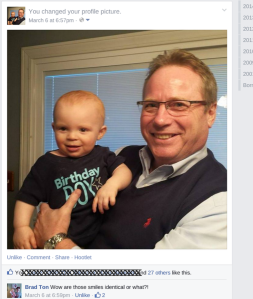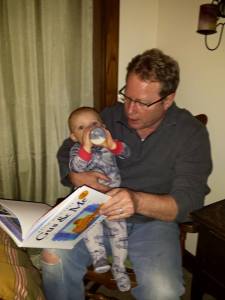Now before you think I am calling Professor Jared Curhan a pirate, let me explain. First of all, if he was a pirate, he would be the lovable, friendly kind like Johnny Depp or Keith Richards. Of all the classes, seminars, and workshops I have ever attended, I have to rank Professor Curhan near the top when it comes to educators who can captivate, entertain, and educate, even a very difficult subject like Negotiation for Executives. In doing his closing remarks for the MIT Sloan Executive Education course, Professor Curhan, confessed he struggled to summarize such an intense couple of days, he wanted the class to have a take-away with all the salient points, but it was too big to put into a single page, even a large page, even a poster-sized page. With that confession, he unfurled a beach towel..a huge beach towel. The beach towel was printed with a very detailed drawing of a pirate ship, buried treasure, mermaids and other sea creatures, each one depicting a point from the class. So, while Professor Curhan is not a pirate, we really did have Lessons in Negotiations from a Pirate! But, I am ahead of myself…
As in my previous posts about the classes I have attend at MIT Sloan Executive Education, I don’t want give away the content of the course (you should ATTEND ONE…or two…or three), but I do want to talk about the experience. I have to admit, of all the courses I have taken, I was most nervous about this one. I was not sure what to expect. Were we going to learn how to be cut-throat negotiators? Were we going to learn tricks and tactics to help us win at all costs? Was I going to learn my entire approach to negotiations was wrong?
My mind flashed back to one of the first major negotiations I was involved in. I was sitting in the “business chair”, alongside our corporate counsel. We were negotiating a deal that was in the tens of millions of dollars. We were under a deadline to seal the deal. We scheduled our final negotiations for a Friday in June, with the message to the others, we were not leaving until we had a deal.
Friday came and our vendor and their high priced Washington, D.C. attorney arrived from the airport. Everyone was suited-up and ready to get down to business. After a long day of negotiating, (and frankly, not making much progress), the vendor’s attorney announced he had a plane to catch and got up to leave. I felt our attorney bristle. He calmly looked across the table and said, “I told you, we were here to make a deal and we were not leaving until we had it closed. If you walk now, the deal is over and we will call your competitor.” Grumbling something about taking a later flight, they sat back down.
About midnight, our attorney looked around the table and announced we would halt for the evening, but we would reconvene at 8 AM Saturday. Now, remember, this was a group of five or six guys from out of town, who had not expected to be there overnight. Also, remember this was June. Have you ever been in an office building after hours, in June…after the HVAC shuts off for the unoccupied schedule? To say the conference room had gotten, well, close was an understatement.
The next morning we all gathered in the same hot stuffy conference room (hey, who knows how to override the HVAC? Evidently, nobody). We sat down for another long day across the table was the high-priced Washington D.C. attorney, no longer in his three-piece suit from the day before. Today he was sporting his suit pants, paired with a Grateful Dead t-shirt he’d purchased at the 24 hour Walmart down the street! By midnight Saturday (our deadline), we closed the deal.
What an introduction to negotiation! As the day of the class approached, it had me looking around for an old Grateful Dead t-shirt!
Class was NOTHING like I expected, in fact, I learned the approach just described would be considered a barrier to successful negotiation, especially when a long lasting relationship was one of the desired outcomes of the negotiation!
Over the course of the class, I sold a house in Cambridge (including a breeding pair of Moluccan Cockatoos), bought a car on behalf of my niece, hired a freelance consultant to help with a big project and negotiated an exclusive deal for my middle eastern beverage company to distribute Bepsico products. Of course, these were all in class exercises as we learned to handle various negotiations. Again, I don’t want to give away too much of the class, but I did have several “aha” moments.
After each one of the negotiations, we wrote some notes about what went well and what didn’t go so well. As I looked back over my notes a couple of common themes jumped out at me. First, in each case, I wrote the relationship with the other party was good, amicable, and set a good foundation for future negotiations. On the other side of the ledger, I wrote that I felt like I left money on the table. I started to worry that I was being “too nice”. Here was the interesting part. In each case, I had negotiated a deal that was above my reservation value and in most cases was close to my aspiration value. As the days progressed, I came to understand, I was evaluating myself with the filters of my initial lesson in negotiation…win at all costs. The course validated that relationship building was, in fact, a significant part of negotiation and I was doing it well. On the flip side, I will paraphrase Professor Curhan, “I give them as much as I can and ask for no more than I need. They do the same. If not? Then I don’t.” Meaning, if I set my reservation value and aspiration value fairly, and I negotiate a deal in that range, and I build a strong relationship for working together in the future then, I shouldn’t feel like I am “leaving money on the table.”
In his book, “Illusions: The Adventures of a Reluctant Messiah”, Richard Bach writes, “Teachers do not teach, they remind us of things we already know.” That sums up the second lesson I took away from the class: “Proper preparation for negotiation takes the nervousness out of negotiation.” Duh! One of the most valuable pieces of collateral we received in the class was a framework. The framework outlined the Seven Elements to preparation for negotiation. Even when pressed for time, keeping the framework in mind can help you think through all of the elements you need to consider. I know I will be using the framework for every negotiation in the future!
Very much a part of the framework is the mantra, “Don’t lose sight of your purpose.” Many times when faced with barriers to a successful negotiation (like sweating the suits off of people) or tactics meant to “win at all costs”, we tend to lose sight of our purpose. Your purpose should be clear and concise so that it is easy to fall back on during the negotiation process. For example, if preserving a long term relationship is part of your purpose, it may make sense for you not to be involved in the negotiations at all.
Finally, was the concept of value claiming versus value creation. Value claiming assumes a fixed size pie. As you claim value, the other side loses value. While this is ok for some negotiations (give them as much as I can, take only what I need), there are some negotiations that can increase the size of the pie, in other words, create value. Professor Curhan liked to call it the post-settlement settlement. Once an agreement is reached, explore ways in which the pie can be enlarged and value can be created for all parties.
I am only scratching the surface of the lessons I took away from the class. In addition to these lessons, I took away some very valuable relationships with others in the class. To me, that is the way MIT “enlarges the pie”…students gain tremendous insights and have access to some of the greatest minds in business, with the added bonus of meeting and forming relationships with professionals from across the globe. So, if you are sitting across the table from me in a negotiation and you see my Jolly Roger with Skull and Crossbones, never fear it’s only a reminder for me to make sure that we build a solid relationship and that we both walk away satisfied with the conclusion.
Want to exchange ideas on Twitter (@jtongici)?
Expanding your circles on Google+?
Read more of my musings on LinkedIn.
Interested in IT and it’s role in business? Check out my posts on Intel’s IT Peer Network.


 Last summer, while preparing for a family cookout at Whitetail Meadow, I was setting the fire in the firepit. My grandson Braxton was busy playing in the yard, running from one adventure to the next. As I broke sticks for kindling, he stopped to watch me intently. (Braxton LOVES to play with sticks). Soon, without any prompting from me, he was picking up sticks and “helping me” stack them in the firepit. Will he learn to love the outdoors as I do from me? His father has always been a hard worker, will that trait pass down to our Braxton?
Last summer, while preparing for a family cookout at Whitetail Meadow, I was setting the fire in the firepit. My grandson Braxton was busy playing in the yard, running from one adventure to the next. As I broke sticks for kindling, he stopped to watch me intently. (Braxton LOVES to play with sticks). Soon, without any prompting from me, he was picking up sticks and “helping me” stack them in the firepit. Will he learn to love the outdoors as I do from me? His father has always been a hard worker, will that trait pass down to our Braxton? would forever shape Keith’s life. Will Jordan learn to love music and enjoy the “classics” (like Satisfaction, Jumpin’ Jack Flash, and more) through a bedtime story and a connection with his grandpa? His father loves music and had a career of his own writing songs from his heart, will that trait pass down to our Jordan?
would forever shape Keith’s life. Will Jordan learn to love music and enjoy the “classics” (like Satisfaction, Jumpin’ Jack Flash, and more) through a bedtime story and a connection with his grandpa? His father loves music and had a career of his own writing songs from his heart, will that trait pass down to our Jordan? As an amateur genealogist, I have spent hours assembling our family history (to give credit, by Aunt Betty did most of the work, I was just a very lucky recipient of some of her files). When my Granny Ton passed away, I was blessed to receive her journals and many of her old photographs. The Facebook comment also reminded me of one of the photos of her parents, Aloisia and Franz Hickey. Every time I look at that picture, I see my dad in the face and eyes of his Grandma Aloisia. To me it is striking!
As an amateur genealogist, I have spent hours assembling our family history (to give credit, by Aunt Betty did most of the work, I was just a very lucky recipient of some of her files). When my Granny Ton passed away, I was blessed to receive her journals and many of her old photographs. The Facebook comment also reminded me of one of the photos of her parents, Aloisia and Franz Hickey. Every time I look at that picture, I see my dad in the face and eyes of his Grandma Aloisia. To me it is striking!

